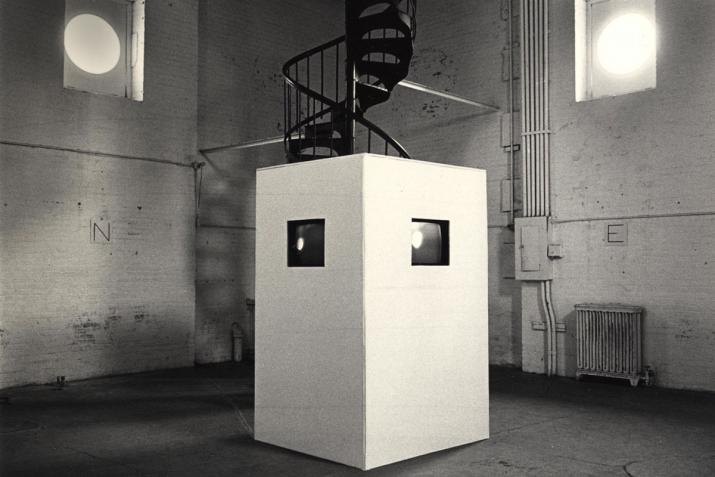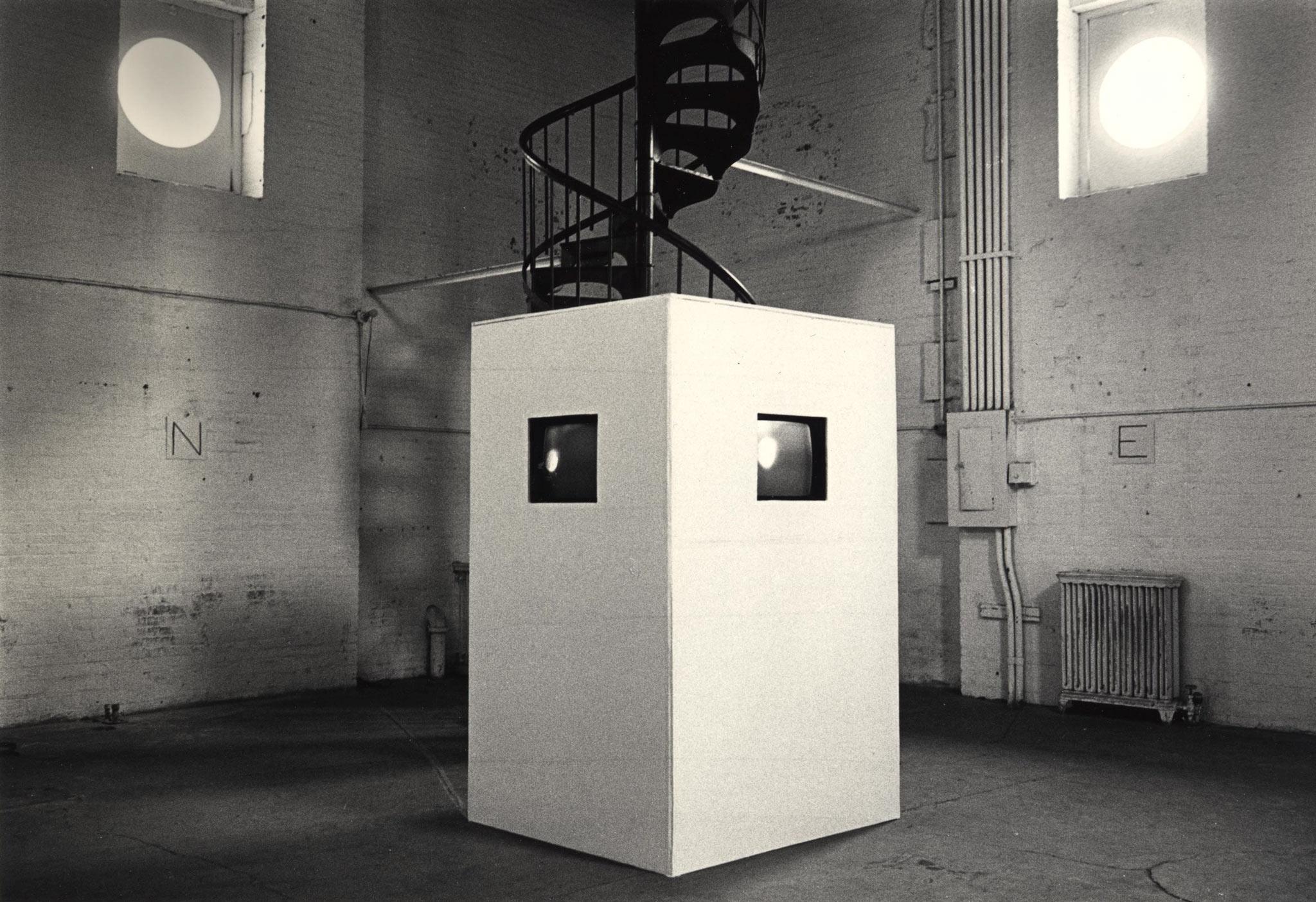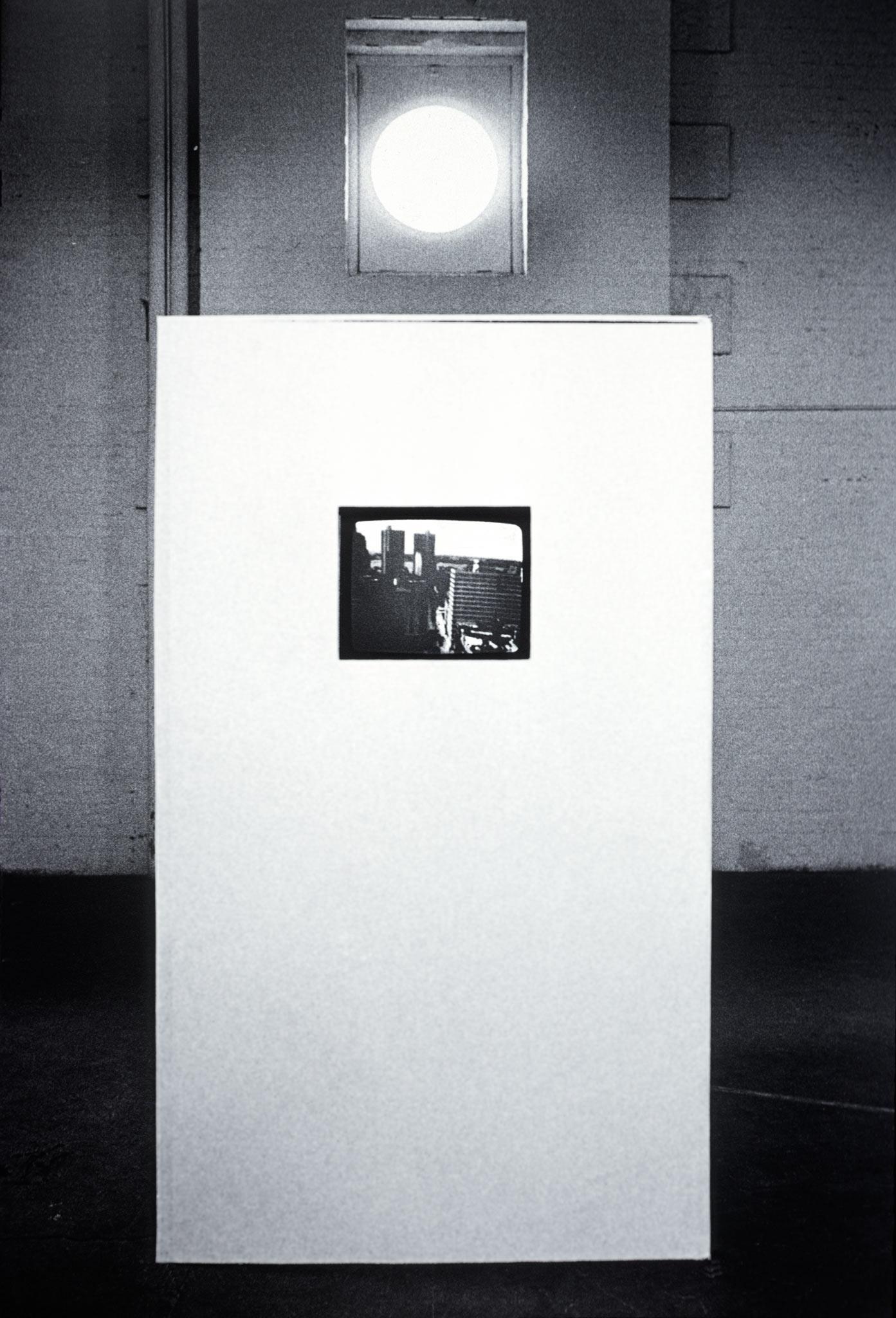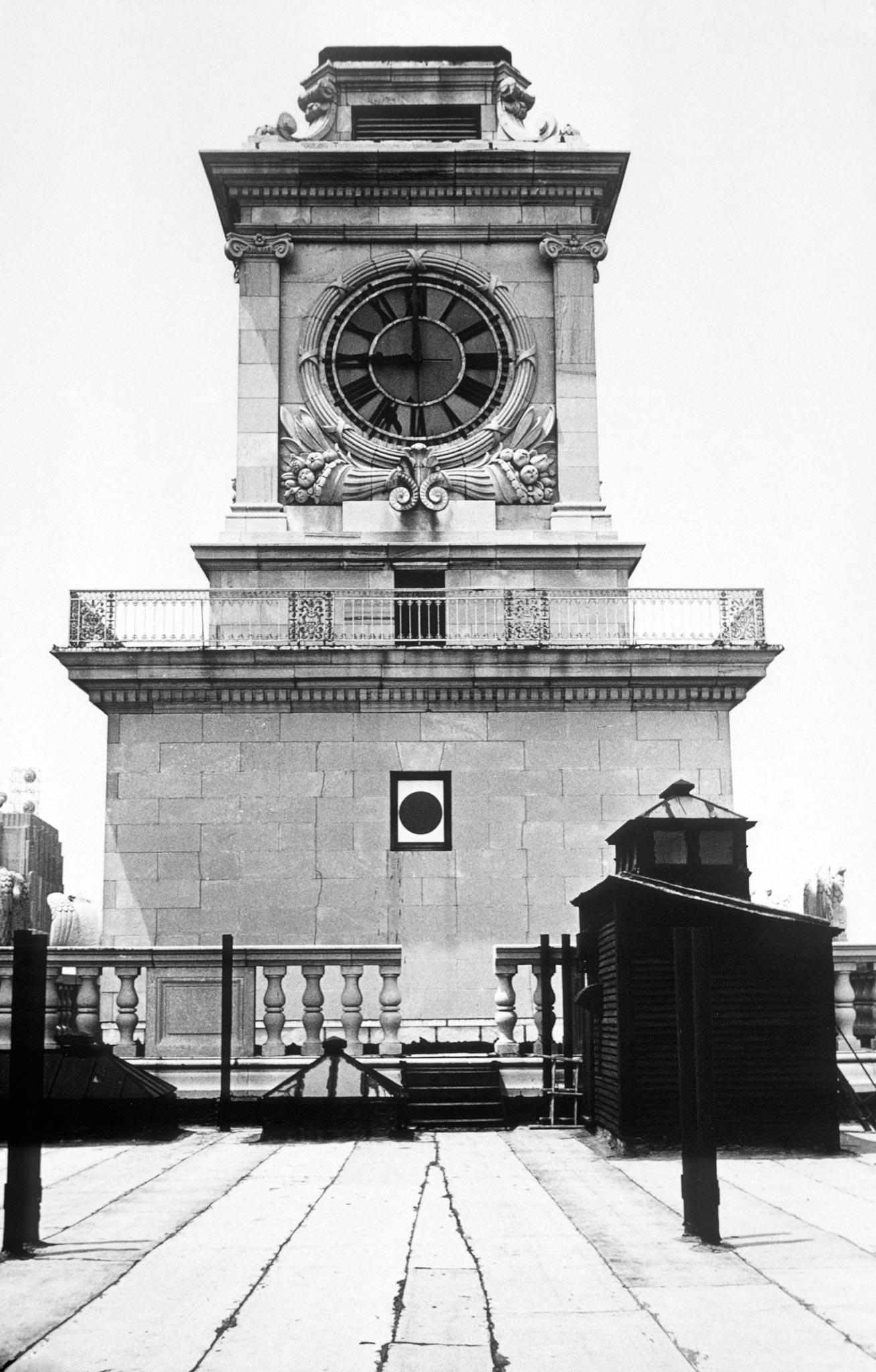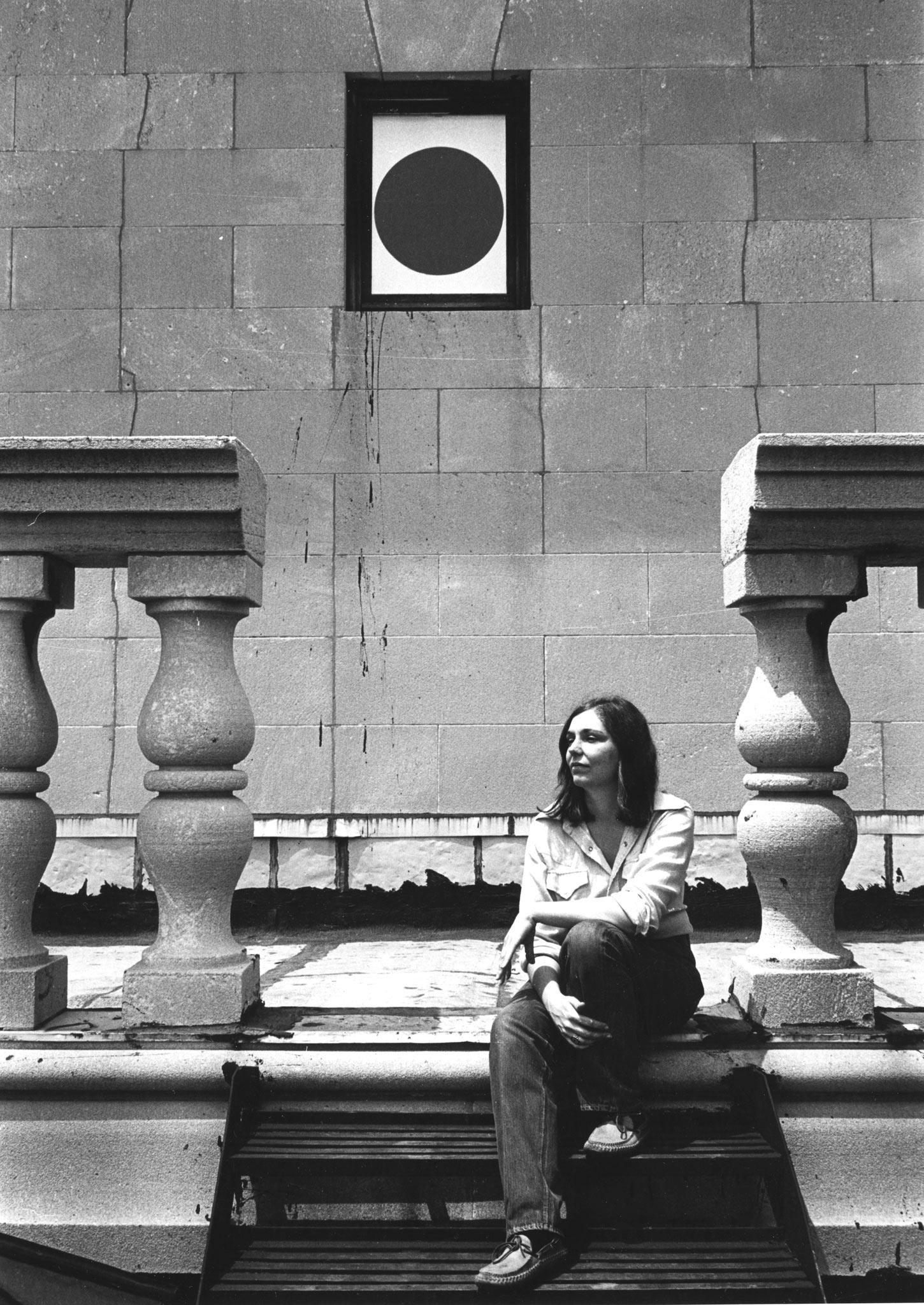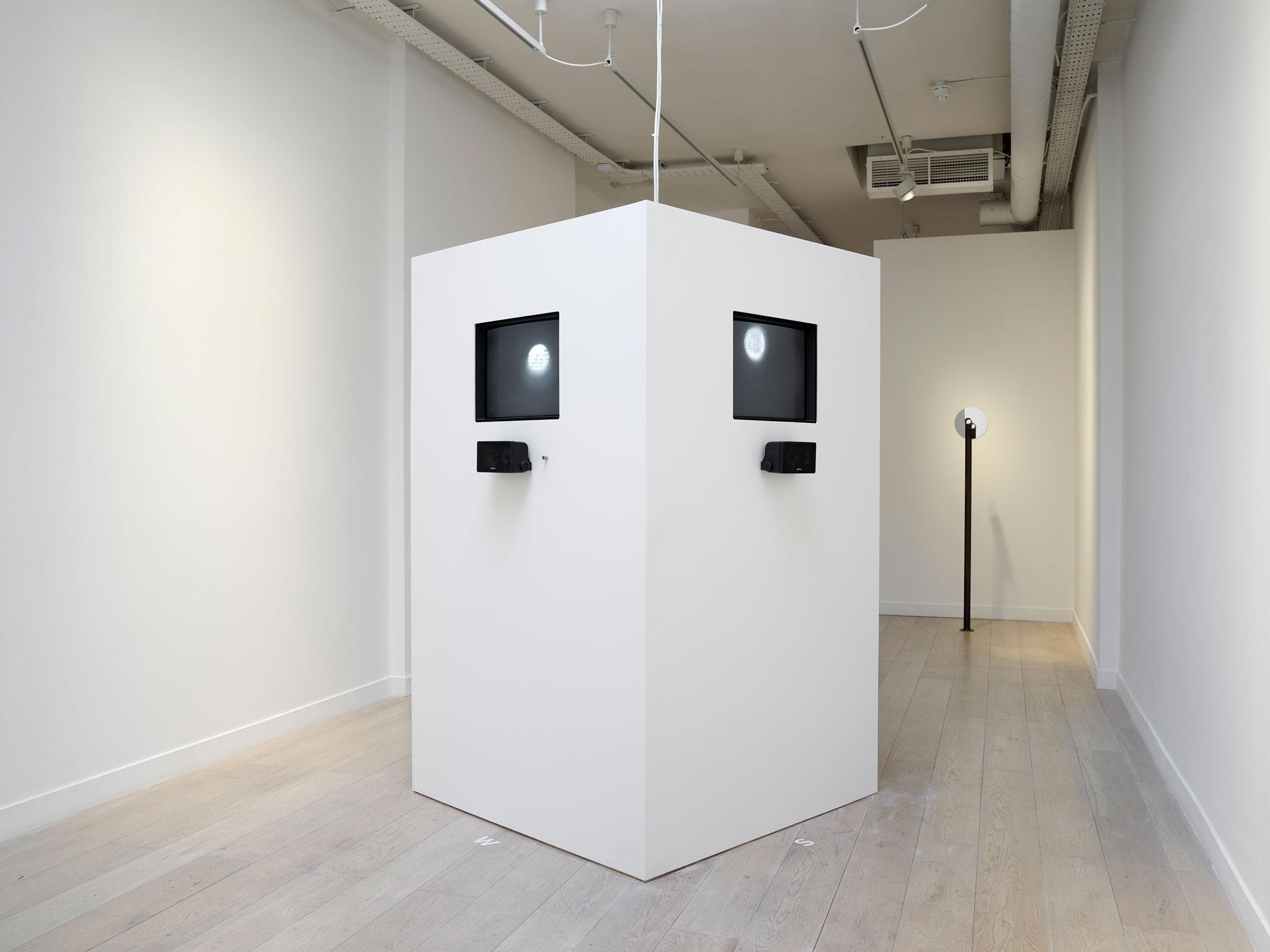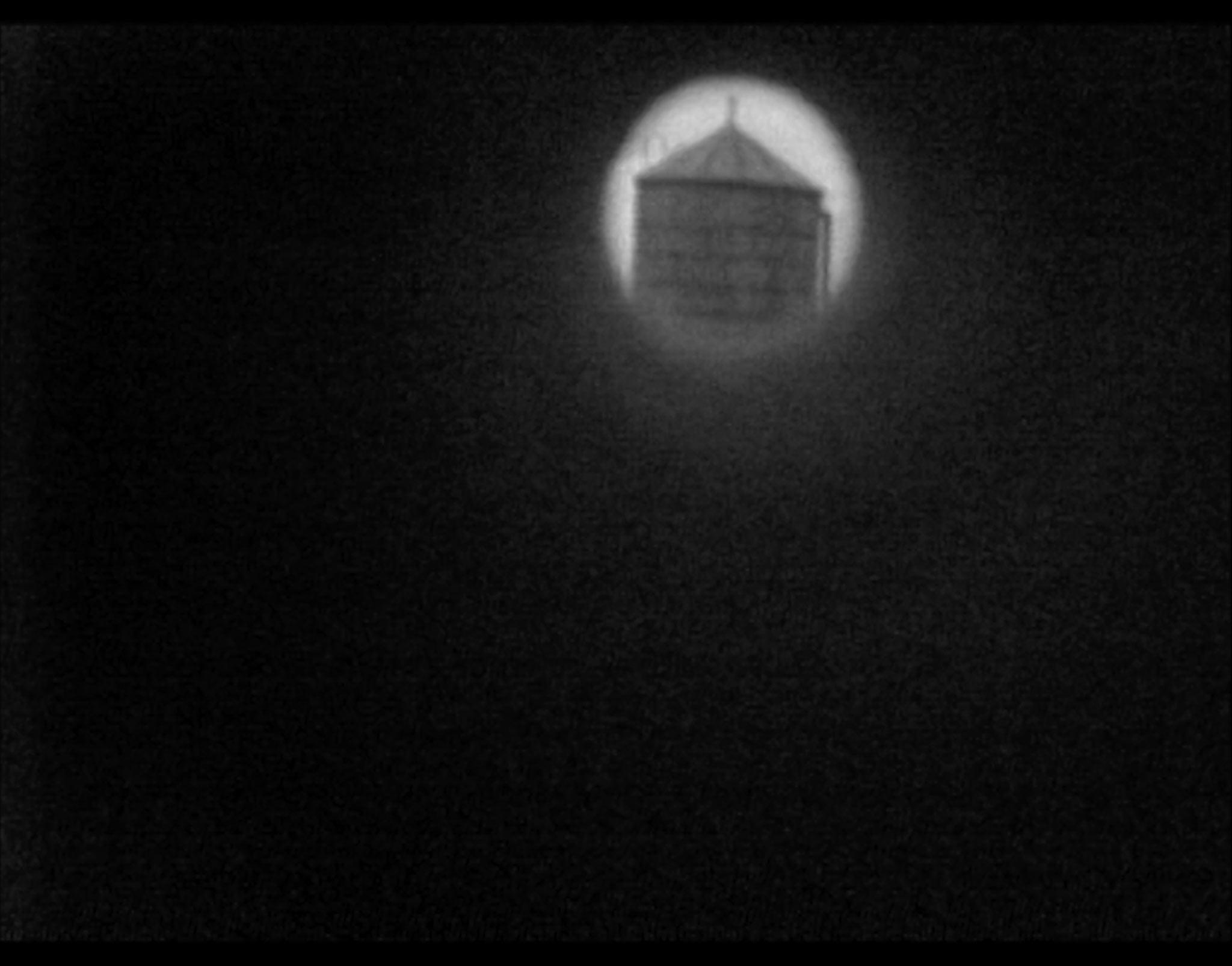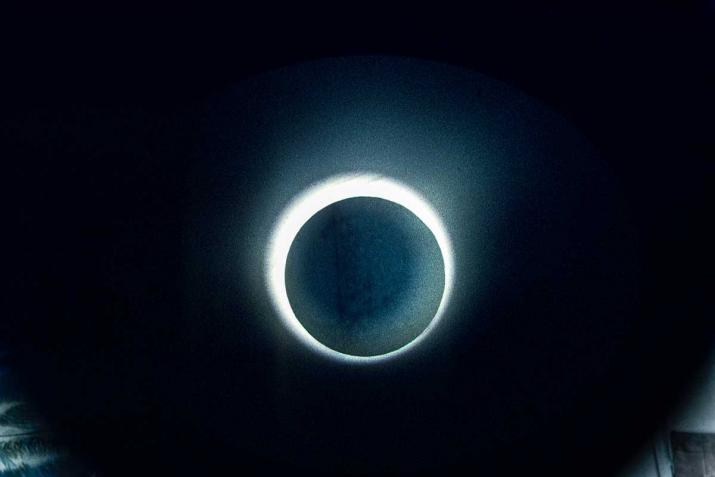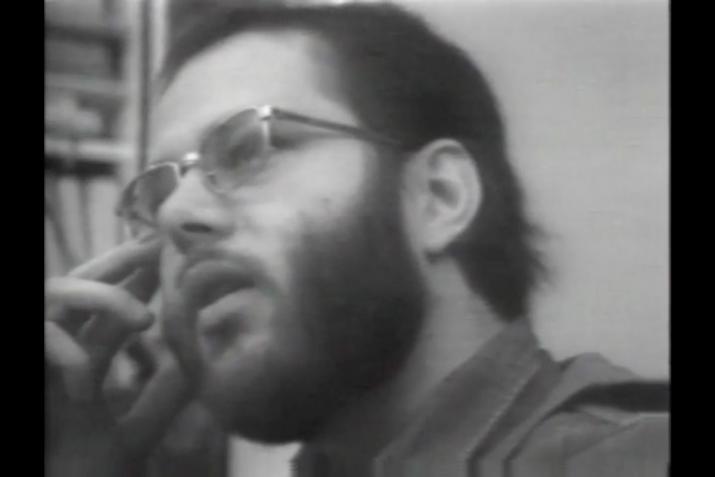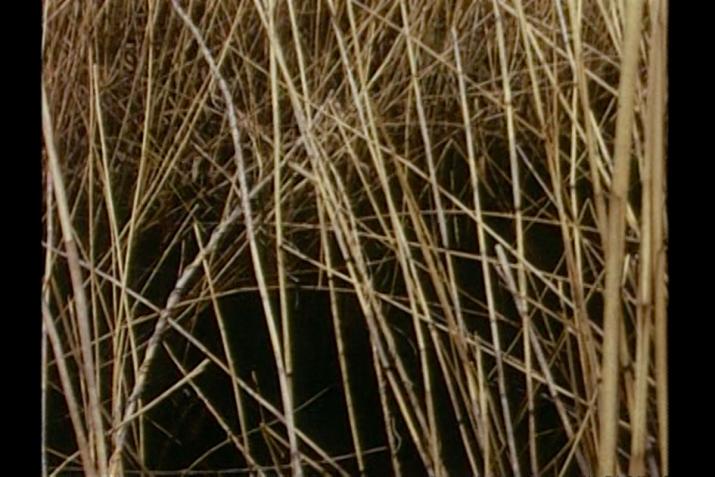Four-monitor video installation, black-and-white, sound
Video unit: 6 ft. x 4 ft. 6 in. x 4 ft. 6 in. (1.83 x 1.37 x 1.37 m)
Duration: 44 minutes
©Holt/Smithson Foundation, Licensed by VAGA at ARS, New York
In the 1970s Holt’s interest in framing vision and making words material led her to explore the productive miscommunications that take place when information is imperfectly transferred from one medium to another. The four-screen video installation Points of View (1974) reveals, as she notes in her journal, “the wonder of place through verbal description.” Points of View was made for the Clocktower Gallery in New York. Four monitors show views of Lower Manhattan as seen through a moving circular tube looking out the windows of the iconic New York exhibition space. Each is accompanied by a dialogue that, literally and conceptually, demonstrates different points of view. Lucy Lippard talks with Richard Serra, Liza Béar with Klaus Kertess, Carl Andre with Ruth Kligman, and Bruce Boice with Tina Girouard about what can be seen through the north, south, east, and west facing windows.
In the first presentation in 1974, visitors could compare the strangers’ observations to their own personal perceptions; they may watch the video footage on the monitor, or step just outside the Clocktower Gallery to explore the same view in actuality. Seen today, Points of View performs travel through both time and space, actively engaging with the visual-cognitive processes.
Points of View was presented in the solo exhibition Nancy Holt: Points of View at Parafin, London in fall of 2020.
